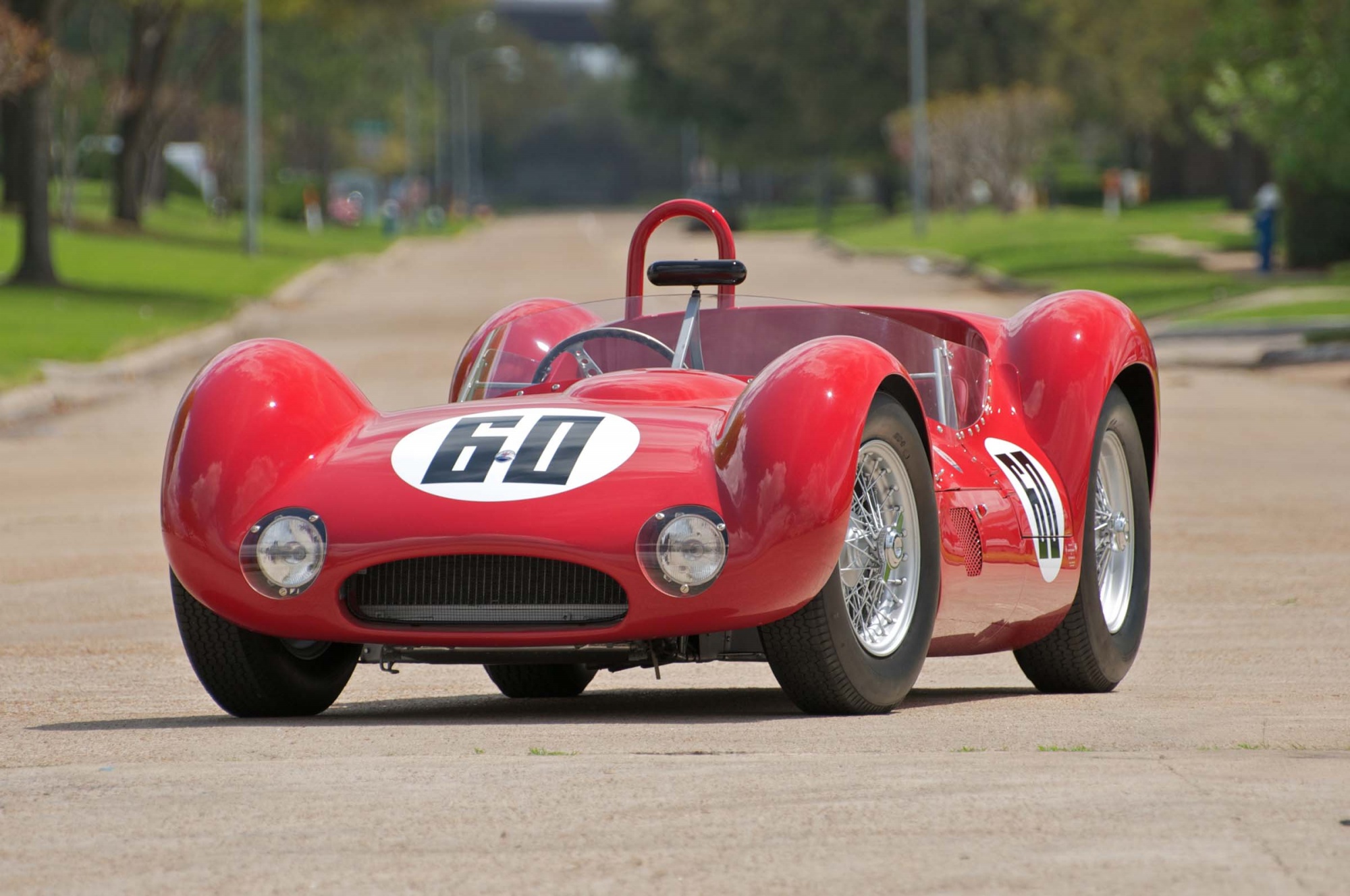1959 Maserati Tipo 61 Birdcage

The descriptions of the Classic Cars in the Directory were partly generated or supplemented with the help of artificial intelligence (AI). The content may occasionally not always be entirely accurate or factually correct despite careful checking.
The Maserati Tipo 61 Birdcage 1959 is a car that stands out in the realm of vintage sports cars for its unique design and exceptional performance capabilities. In the following description, we'll delve into the technical aspects of this legendary vehicle.
One of the most striking features of the Tipo 61 is its birdcage chassis design. This innovative frame was made up of over 200 thin tubes that were welded together to create a skeleton-like structure. This gave the car incredible strength and rigidity while maintaining a lightweight and agile feel. The chassis also allowed for a low center of gravity, which was crucial for achieving the Tipo 61's impressive handling capabilities.
Underneath the hood, the Tipo 61 was powered by a 2.9-liter inline-four engine that produced around 250 horsepower. Although this may not seem like a lot by today's standards, it was a significant amount in the late 1950s. The lightweight design of the vehicle, coupled with the engine's power, allowed for impressive acceleration and top speeds.
The Tipo 61 was also designed with aerodynamics in mind. The car's body was contoured to reduce drag and create downforce, which helped keep the car stable at high speeds. The front of the car featured a "shark nose" design that was popular at the time, and the rear of the car had an iconic "twin tail" configuration.
Perhaps one of the most impressive things about the Tipo 61 was its racing pedigree. The car was built for endurance racing and competed in events like the 24 Hours of Le Mans and the Targa Florio. The Tipo 61 achieved numerous victories during its racing career, including a class win at Le Mans in 1959.
In conclusion, the Maserati Tipo 61 Birdcage 1959 is a car that was ahead of its time in terms of design and performance. Its birdcage chassis, powerful engine, and aerodynamic body made it a force to be reckoned with on the racetrack. Even today, the Tipo 61 remains a beloved classic among sports car enthusiasts.
Milestones
- 1958: Development of Maserati Tipo 61 begins - 1959: Tipo 61 Birdcage unveiled at the 24 Hours of Le Mans - 1959: Stirling Moss and Dan Gurney win the Nürburgring 1000km race in a Tipo 61 Birdcage - 1959-1960: Multiple podium finishes in European and American racing circuits - 1960: Tipo 61 Birdcage becomes the first race car to use a tubular space frame chassis - 1961: Last Tipo 61 Birdcage built, with a total of 16 cars produced - 1962: Tipo 61 Birdcage retired from racing, with many cars sold to private owners - 2005: Tipo 61 Birdcage named as one of the Top Sports Cars of the 1960s by Sports Car International - 2011: Maserati Tipo 61 Birdcage becomes the centerpiece of the Art of the Automobile exhibit at the Museum of Fine Arts in Houston.Technical
- Engine: Four-cylinder twin-cam 2.9-liter inline engine - Power output: 250 horsepower at 7000 rpm - Top speed: 170 mph - Transmission: 5-speed manual gearbox - Suspension: Double wishbone with coil springs in front, de Dion axle with transverse leaf springs at the rear - Brakes: Disc brakes on all four wheels - Weight: Approximately 1,500 pounds - Chassis: Tubular space frame construction (hence the nickname "Birdcage") - Bodywork: Lightweight aluminum-alloy panels - Steering: Rack-and-pinion, non-assisted - Fuel tank: Capacity of 100 liters - Production: Approx. 22 examples produced between 1959 and 1961 for racing purposes.